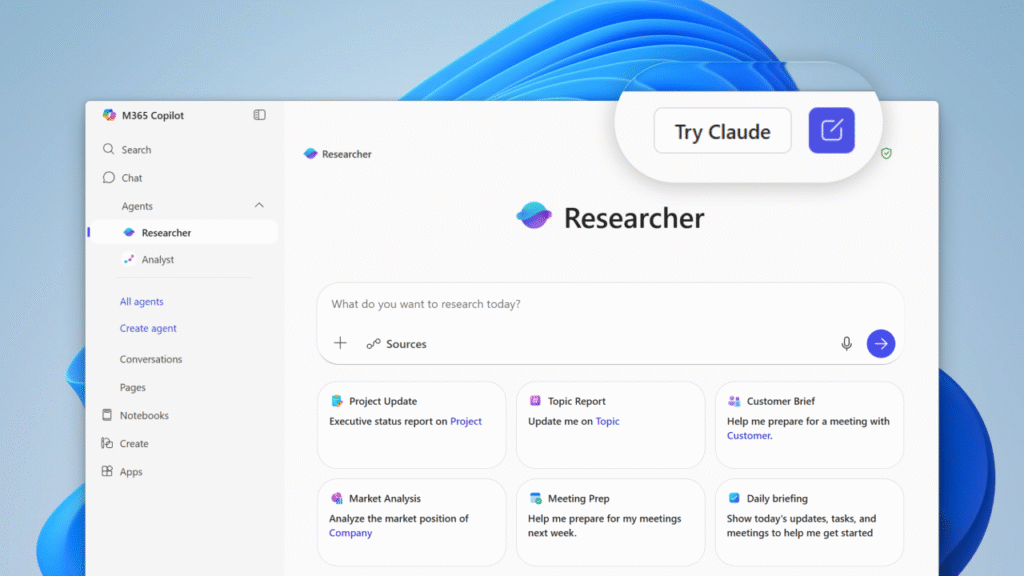The recent expansion of Microsoft 365 Copilot to incorporate Anthropic models alongside OpenAI’s offerings marks a significant shift in the landscape of AI-enabled productivity tools. As Small and Medium Business (SMB) leaders and automation specialists evaluate these developments, it is essential to dissect the functionalities, strengths, weaknesses, and potential return on investment (ROI) within this evolving ecosystem. This analysis serves as a compass for organizations exploring which tools can provide them with a competitive edge in a rapidly transforming market.
Microsoft 365 Copilot itself has rapidly emerged as a linchpin in modern business operations by leveraging advanced AI capabilities. It provides users an intuitive interface, facilitating the creation of rich content, meticulous research, and seamless collaboration by understanding contextual nuances in their tasks. With the introduction of Anthropic’s models—Claude Sonnet 4 and Claude Opus 4.1—users gain flexibility, which is crucial for customizing performance based on their specific requirements.
In comparing OpenAI’s models against Anthropic’s, several critical areas emerge that warrant attention. OpenAI, renowned for its extensive model training and capabilities, offers advanced language understanding and generation. Users have reported superior performance in tasks requiring nuanced creative expression and complex decision-making processes. However, the competition is intensifying. Anthropic’s Claude models emphasize ethical AI usage and interpretability, which resonates with organizations prioritizing responsible AI deployment. This alignment with ethical standards may serve as a compelling differentiator in market segments where corporate governance and client trust are paramount.
Financial implications are also a significant consideration. While both OpenAI and Anthropic models can command premium pricing, the cost structure may vary based on the specifics of the deployment. Organizations must weigh the cost against the uptime and operational efficiency achieved by adopting these tools. Initial assessments suggest that integrating AI into existing workflows can yield a ROI upwards of 30%, as evidenced by studies showcasing enhanced productivity and decreased labor costs. However, this requires robust implementation strategies and potential reevaluation of internal processes to align with the capabilities of AI.
Furthermore, scalability plays a pivotal role in the decision-making process. SMBs often face limitations in resources that larger enterprises may not. Therefore, the adaptability of AI models becomes critical. OpenAI has developed a robust infrastructure that can handle large-scale deployments effectively, but its continuous demands for fine-tuning may require additional resources. In contrast, Anthropic’s models are designed to foster more intuitive integration into existing systems. This potentially leads to smoother transitions for teams not already heavily invested in AI technologies, an especially relevant point for SMBs aiming for rapid impact without overextending their resources.
Beyond AI models, the customization capabilities showcased in Microsoft’s Copilot Studio allow users to build bespoke workflows and automation systems tailored to their business needs. The ability to select models according to task-specific requirements enhances operational efficiency, enabling organizations to foster collaborative environments that drive innovation. However, this multi-model capability necessitates a strategic approach to determine which model works best for individual tasks—an aspect that may initially seem complex but ultimately empowers teams to leverage AI’s strengths.
When considering the acute competition emerging in the automation market, tools such as Make and Zapier also jump into the discussion. Both are recognized for their strengths in workflow automation; however, they serve slightly different purposes. Make excels within customizable automation while maintaining a user-friendly interface, beneficial for organizations with varied automation needs. Zapier, on the other hand, offers an expansive library of integrations that can enhance productivity at a lower initial cost, but its scalability could pose challenges for larger operations needing nuanced support.
In weighing these tools, it is vital to evaluate not only their immediate features but the long-term implications of adopting AI and automation solutions. For instance, the investment in a tool like Microsoft 365 Copilot should be contextualized within strategic goals—whether that’s enhancing customer engagement, driving revenue growth, or operational efficiencies. Engagement in training sessions for team members and aligning organizational processes with automated features will yield profound benefits.
In conclusion, as organizations navigate the evolving landscape of AI and automation solutions, the integration of Anthropic models into the Microsoft 365 Copilot presents an opportunity for enhanced customizable workflows, ethical AI deployment, and long-term sustainability in automation processes. By carefully evaluating the alignment of each tool with strategic objectives and market expectations, SMB leaders can positioned themselves not only for efficiency gains but also for innovation in their operational frameworks.
FlowMind AI Insight: Embracing the convergence of AI models within productivity tools is not just a technological upgrade; it’s a strategic pivot that can define a company’s trajectory. An informed approach will allow SMBs to leverage these advances to streamline operations and foster deeper connections with their customer base, ultimately driving sustainable growth.
Original article: Read here
2025-09-24 15:00:00

